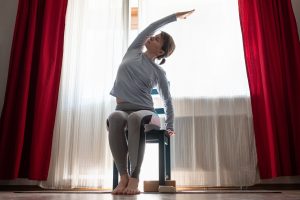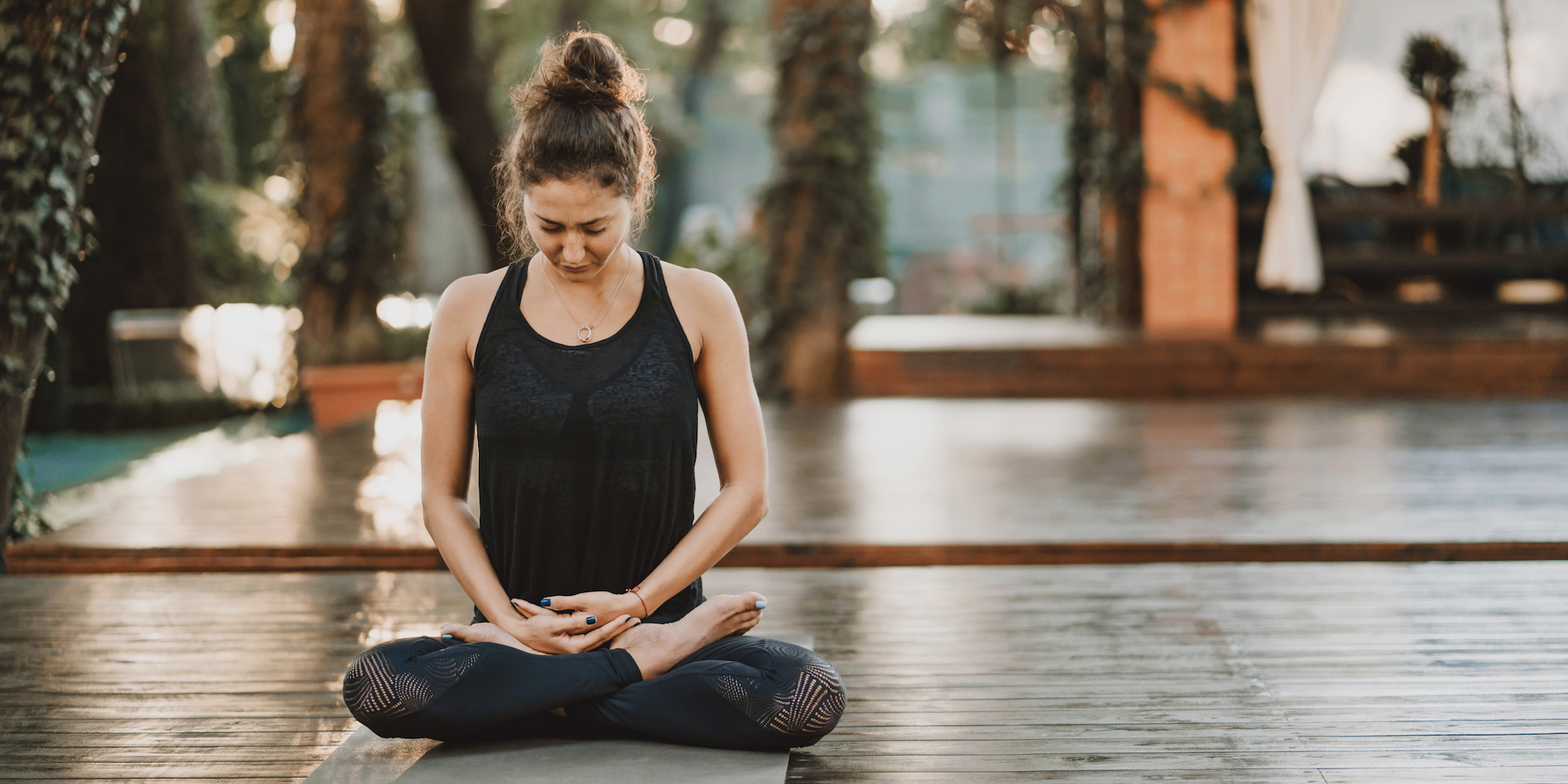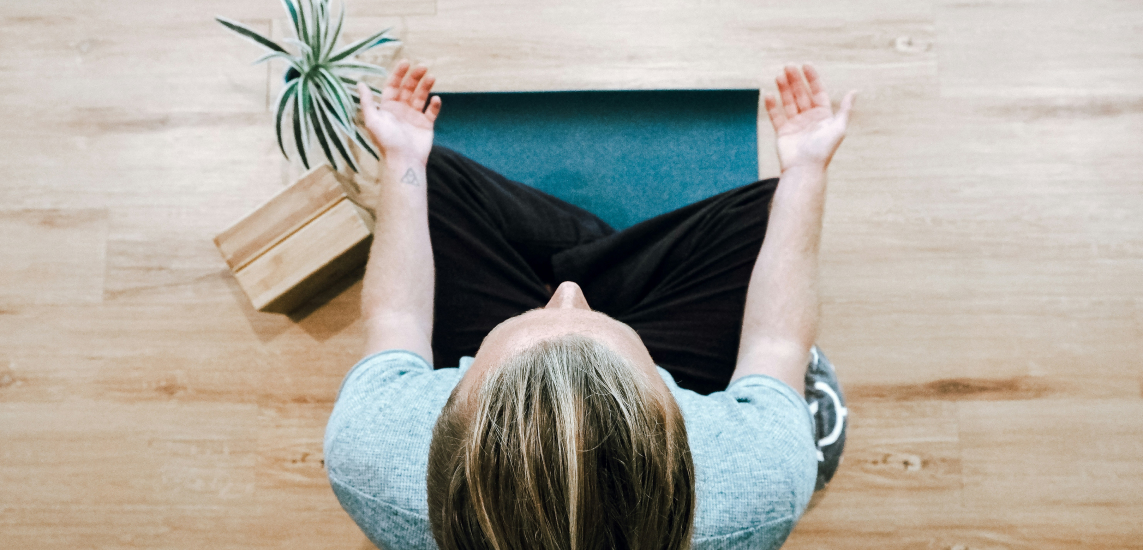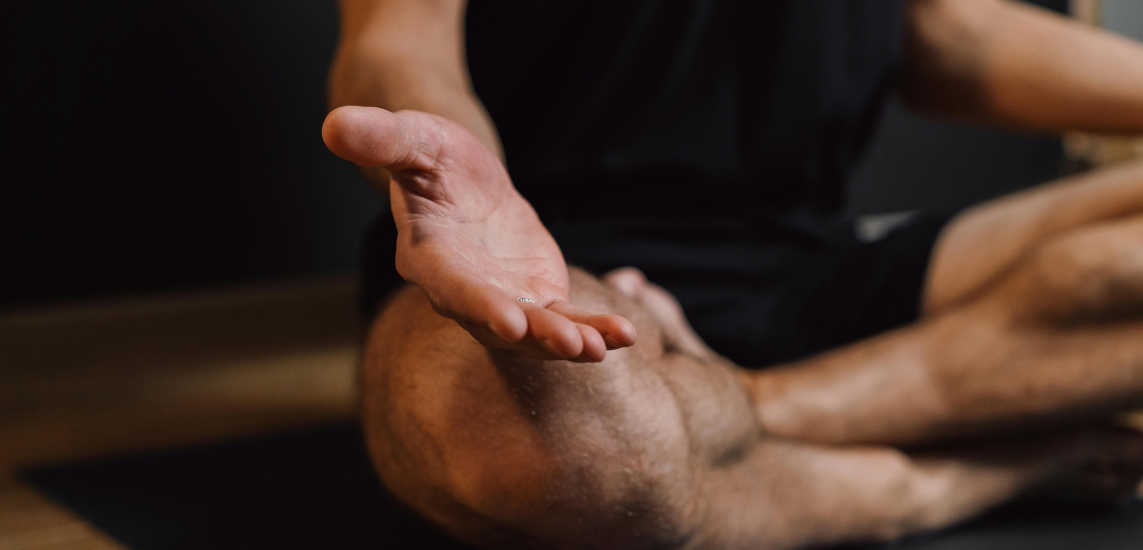Meditation should be a time of peace, not pain. Yet, many find their sessions overshadowed by discomfort — in the back, knees, neck, or elsewhere. Insight Timer understands everyone’s wellness journey is unique, offering tools and guidance for all levels from beginners to experienced meditators. No one can maximize the benefits of meditation if they have physical discomfort. This article aims to tackle the issue of soreness during meditation, guiding you towards a pain-free practice with suitable sitting positions and techniques.
Key takeaways
- Finding the right sitting position and incorporating mindful movement are keys to pain-free meditation.
- Adjusting your posture can significantly reduce discomfort, enhancing the overall quality of meditation.
- Tailoring your meditation posture to suit your unique needs helps prevent soreness and keeps you focused.
- Incorporating stretches and mindful movement before meditating can significantly enhance comfort and the overall meditation experience.
For guidance on managing discomfort during meditation and to deepen your practice, explore meditations for pain management by Vidyamala Burch on Insight Timer.
The challenge of pain in meditation
Many meditators encounter pain, experiencing discomfort in the back or knees. This often results from long periods sitting in one position, which can lead to muscle stiffness and joint pain. The primary culprits are poor posture and lack of movement, conditions exacerbated by our modern, sedentary lifestyles.
Proper posture is key to avoiding this discomfort. Adjusting how we sit can alleviate pressure on sensitive areas, promoting circulation and preventing pain. Ensuring the spine is aligned and supported can make a significant difference in reducing neck pain, while adjusting the legs and hips can help relieve knee soreness.
Research highlighted in National Geographic explains how our understanding of pain is evolving — and that mindfulness and good posture significantly counter discomfort during meditation.
By applying these insights, meditators can find ways to sit more comfortably and enhance the meditation experience.
For further exploration of how posture affects meditation and ways to find comfort, here are our additional tips for navigating discomfort during meditation practices.

Back pain during meditation: find relief
Back pain during meditation often comes from sitting too long without proper support. This can especially affect both the lower and middle back.
Generally, to reduce back pain, ensure you have a natural curve to your spine. This can be easy to miss when sitting. Use a cushion (like a zafu) or folded blanket to elevate your hips, as this helps keep your spine’s natural shape. Engaging your core lightly also supports your lower back, minimizing slouching.
Before and after meditating, try some mindful stretches. Stretching helps loosen the back muscles, making sitting more comfortable.
Explore mindful stretching with this 4.8-star guided stretching practice from Denise Gour.
Studies indicate proper sitting support is crucial for back health.
- If you specifically struggle with lower back pain, adopting a posture that keeps the spine in a natural alignment is crucial.
- For middle back pain, keep your shoulders relaxed and avoid hunching to prevent tension build-up.
- To address upper back pain, avoid slouching. If you tend to hunch over or are in the habit of slouching, your upper back muscles may be weak. As you work on sitting more straight, be sure to take breaks and stretch as the muscles strengthen.
Sadly, too, back pain can often become chronic due to poor understanding of pain mechanics, poor explanations by health professionals, and a number of factors that make certain people more susceptible to developing chronic pain. In fact, a study examining trends in spinal pain found:
- 15-20% of the US population develop protracted back pain
- 2-8% have chronic back pain (pain that lasts more than 3 months)
- 3-4% of the US population is temporarily disabled due to back pain
- 1% of the working-age population is disabled completely and permanently as a result of low back (lumbar) pain.
Back pain is incredibly common, meaning. . . you’re sure to experience it at some point during your life — and maybe even during meditations.
We recommend simplifying your meditation setup to significantly enhance your practice’s comfort and focus. For more tips on easing back pain during meditation, including posture adjustments and supportive practices, we suggest reviewing resources on back pain and sitting.
Knee comfort: adapt your sitting position
Knee pain is a frequent discomfort for seated meditations, particularly in lotus and cross-legged positions for extended periods. This pain often stems from the unfamiliar stress these postures place on our joints, which aren’t used to being flexed in such ways in daily life. The worry about potential harm — such as cutting off blood circulation or aggravating arthritis — can exacerbate the sensation of pain, making it more intense and harder to ignore.
Here are three practical strategies to minimize knee pain during meditation:
- Understand the pain. Recognize that a certain level of soreness during meditation is typically not a sign of any serious bodily issue — it’s your body adjusting to an unfamiliar posture. Keeping this in mind can help reduce anxiety related to knee pain.
- Adjust your position. If knee soreness becomes noticeable, modify your posture. Try extending one leg straight and bending the other, placing the foot on the inner thigh of the straightened leg. Swap legs when necessary to balance the strain on each knee.
- Use supports. For persistent knee discomfort, consider sitting with your back against a wall and legs stretched out in front. Placing a yoga block or pillow under your knees can provide additional support and alleviate pressure on the joints.
Incorporating these adjustments and supports into your meditation practice helps mitigate knee pain, allowing you to focus more on your meditation and less on the discomfort.
Read more: Vidyamala Burch explains five reasons why mindfulness is helpful for living well with pain as well as a collection of tips, guided meditations for pain management, and memorable slogans to help us practice.
Neck and shoulder ease: posture corrections
Neck and shoulder discomfort during meditation often comes from maintaining a tense or improper posture, such as slouching or jutting the head forward. This tension not only distracts from the meditative experience but can also lead to longer-term discomfort and headaches. Addressing neck and shoulder pain involves mindful adjustments and incorporating practices that support a healthy posture.
Here are three practical tips to alleviate neck and shoulder pain during meditation:
- Align your posture. Ensure your head is positioned directly over your spine and relax your shoulders down away from your ears. This alignment reduces the strain by evenly distributing your head’s weight across your neck and shoulders.
- Incorporate gentle stretches. Before and after your meditation, include gentle neck and shoulder stretches. These movements can release built-up tension, improving flexibility and reducing the risk of pain during meditation.
Not sure where to start? Carolyn Anne Budgell has created a stellar 4.9-star gentle self-massage and stretch program that can help you relax and loosen tension.
- Stay mindful of posture throughout the day. Beyond your meditation practice, be aware of your posture as you go about daily activities — notice how you hold your head and where your shoulder blades rest. Poor habits like hunching over a computer can contribute to discomfort during meditation. Make small adjustments to how you sit, stand, and move for a significant impact on reducing neck and shoulder strain.
Implementing these strategies into your routine can help create a more comfortable meditation experience, allowing you to deepen your practice without the distraction of pain.
Here is a short, beginner-friendly yoga session to help relieve neck pain. This is great to warm up before a longer meditation session to help ease discomfort.
For the ankles and legs: supportive practices
Leg and ankle discomfort during meditation can stem from several common issues, such as pressure points from sitting on hard surfaces, reduced circulation from crossed legs, or strain from unsupported postures. These problems can distract from meditation, making it hard to focus or relax fully.
Here are a few ways you can ease the pain in your ankles and legs:
- Use props. Alleviate pressure on the ankles by placing a rolled-up towel or small cushion beneath them. This can also prevent the pins-and-needles sensation often experienced when legs are crossed for too long.
- Elevate the seat. Using a cushion or meditation bench to raise your sitting position can naturally align your hips above your knees. This adjustment reduces the strain on your legs and ankles, promoting better circulation and comfort.
- Position yourself mindfully. Experiment with various leg positions, like the Burmese position, where both feet rest comfortably on the ground, reducing stress on the ankles. Finding a position that reduces discomfort is key to a sustainable practice.
Do you suffer from foot pain more often than not? This foot pain relief meditation by Manal – Mattain will help you to find relief.
How to choose the right meditation position to limit pain
Finding the ideal meditation position is a journey of personal discovery, influenced by individual pain points, flexibility, and comfort preferences. The goal is to achieve a posture that allows meditation for extended periods of time without causing discomfort or distraction. Below, we explore several meditation positions, highlighting which may be best suited for addressing specific areas of discomfort.
- Seated position with support: For those experiencing lower back pain, a seated position on a cushion or chair can provide the necessary support. Maintain a comfortable seated meditation posture by elevating the hips higher than the knees (which supports the natural curve of the spine).
- Half-lotus: Ideal for those with minor knee issues, the half-lotus position allows one foot to rest on the opposite thigh while the other rests beneath the opposite knee. This position reduces the strain on the knees compared to a full lotus, especially when supported with cushions or blankets to elevate the hips.
- Chair meditation: For practitioners dealing with severe knee or back pain, meditating in a chair can be a valuable alternative. Ensuring your feet are flat on the ground and your back is supported, this position alleviates pressure on the knees and back.
- Standing meditation: Standing meditation can be beneficial for those who experience significant discomfort in seated positions. This posture allows for a natural alignment of the spine and can be particularly helpful for individuals with severe back or knee pain.
- Lying down: For ultimate relaxation and minimal strain on the back and knees, lying down in the Savasana (corpse pose) can be very effective, especially for those with chronic pain. It’s important to ensure proper alignment by placing a pillow under the knees or lower back for additional support. Some practices, like yoga nidra, actively incorporate meditative practices with laying down.
Each of these positions offers unique benefits and can be adapted to meet individual needs and pain points. Experimenting with different postures and incorporating guidance from Insight Timer courses can help you discover the most comfortable and effective meditation position for your practice.
For help finding a meditation position that works for you, try this guided instruction to find an ideal meditation posture by Adam Coutts.

Aligning for comfort: Use guided meditations from experts
Achieving a comfortable position that prevents soreness during meditation is crucial for a fulfilling practice. Quality guided meditations play a pivotal role in helping you find and maintain such positions. These guided sessions offer step-by-step instructions that encourage mindfulness of the body’s alignment, ensuring that you can adjust your posture in real time to avoid discomfort. Additionally, you’re taught how to listen to your body and make minor adjustments that can have significant impacts on your comfort levels.
This approach helps you get comfortable during meditation, improves your practice right away, and makes it easier to maintain over time. It also helps avoid the pain and distractions that come from sitting the wrong way.
“Whenever we sit (in meditation) we are going to experience some level of discomfort, whether it’s a tingling in our legs when they fall asleep or perhaps it’s an old aching pain. It could be an itch you’d like to scratch.”
Following meditation instructor Mel A. James’ words, you might want to work with your feelings of discomfort and pain with the help of these guided meditations:


- Sitting Through Discomfort Mel A. James 11:25
- Working with Difficult Bodily Sensations Hugh Byrne 15:08
- Breathing Through Pain And Discomfort Jamie Krasman 9:34
- Sit With Your Discomfort Jelena Fu 10:10
- Pain and Discomfort Meditation Joelle Anderson 20:00
- Gratitude Practice For Discomfort And Difficulty Dr. Candice Creasman 10:02
- Finding A Way Through Physical And Emotional Discomfort Anne Marie Wallen 23:02
- Accepting Emotional Discomfort Dr. Julien Lacaille (MindSpace) 16:13
- Beyond Pain Mary Maddux 15:46
- Making Peace With Physical Discomfort Andrea Zimmering 08:05
- From Pain to Peace Bethany Auriel-Hagan 15:36
- Journey Through Pain Short Version Andy Hobson 13:51
- Resting With Discomfort Lisa Meuser 10:09
- Sitting With Discomfort A. M. Wegner 9:59
- Learning To Sit With Discomfort Kate Heironymus 9:55
- Meditation for Comfort & Ease in the Body Jennifer Meek 10:00
Incorporate mindful movement
Integrating mindful movement into your routine before starting a meditation session can significantly enhance your comfort and focus. This practice involves gentle stretches or yoga poses that prepare your body for sitting still, helping to prevent soreness and stiffness that often accompany longer meditation sessions.
Mindful movement serves several purposes:
- It warms up the muscles, making them more pliable and less prone to injury or discomfort. Stretching the spine, shoulders, and hips can particularly benefit those areas prone to tension during meditation.
- It brings awareness to the body, allowing you to notice and release any held tension before you begin meditating. This awareness helps in adopting a more comfortable and effective meditation posture.
Fortunately, incorporating this practice doesn’t require a lot of time or effort. Just a few minutes of mindful stretching or yoga can make a big difference in how your body feels during meditation.
By making mindful movement a regular part of your meditation practice, you can enhance both the comfort and depth of your sessions. This proactive approach to body awareness not only improves your immediate meditation experience but also contributes to a better well-being overall.
Not sure how to move your body in a mindful manner? This 4.9 star guided meditation will help you learn how to focus on feeling your body while moving.
Wherever you are on your meditation journey — we support you.
Finding a comfy way to sit and adding some simple stretches or guided help can really change your meditation for the better. Insight Timer has lots of tips and guides to help you find what works best for you, making sure meditation is more about peace and less about pain. By tweaking how you sit or using a few props, you’re not just making meditation easier — you’re also taking care of your body. Remember, a good meditation session is about feeling good in both your mind and your body.
Meditation sitting position FAQs
Why is sitting meditation so hard?
Sitting meditation can feel challenging due to our sedentary lifestyles and the unfamiliarity of maintaining a single posture for extended periods. Regular practice and finding a suitable position can ease this difficulty over time.
Why do I feel so much pain in my body after starting mindful meditation?
Initial discomfort is common as your body adjusts to new postures during meditation. This typically diminishes as you develop flexibility and strength in those positions.
What are the best meditation poses for someone with chronic pain?
For those with chronic pain, gentle poses like sitting with support, chair meditation, or lying down positions can be beneficial, reducing strain on painful areas.
Does walking meditation need proper posture?
Just like how you need to avoid sitting with a hunch, you also need to ensure the natural curve of your spine while walking. Proper posture applies to every type of meditation.



-1.jpg)



